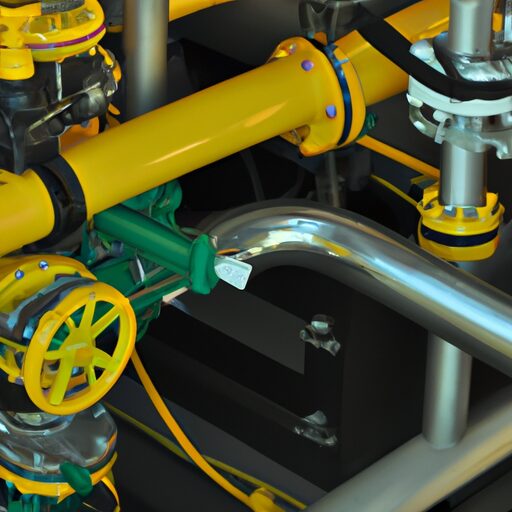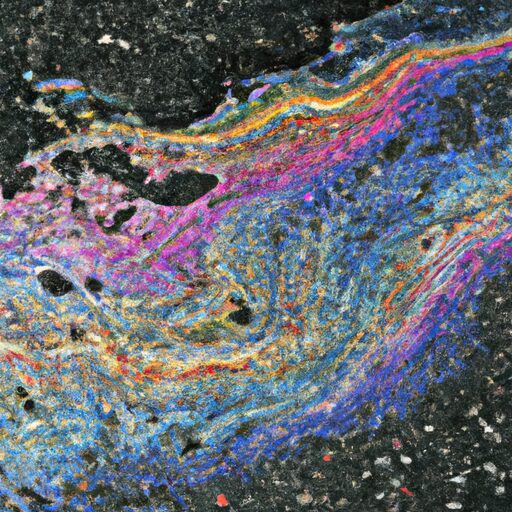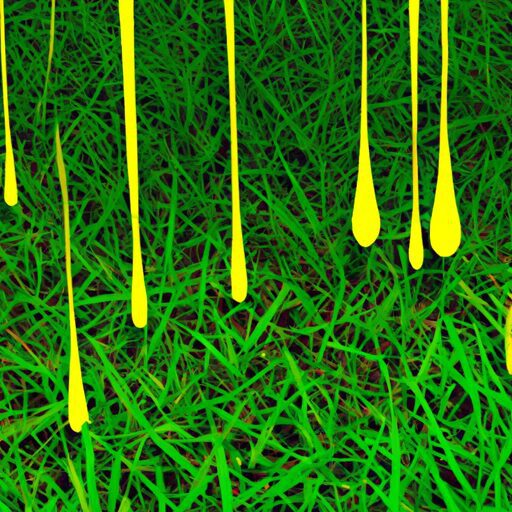Function Of Hydraulic Fluid
Hydraulic fluid plays a crucial role in the functionality of hydraulic systems, serving multiple purposes simultaneously. Through its unique properties and characteristics, hydraulic fluid facilitates the transmission of power, lubricates moving parts, transfers heat for cooling purposes, controls contamination levels, protects seals and O-rings, prevents corrosion, and optimizes system efficiency. By juxtaposing these various functions within hydraulic systems, this article aims to provide a technical and precise understanding of the vital role that hydraulic fluid plays in ensuring the smooth operation of such systems.
The transmission of power is achieved through the use of hydraulic fluid as a medium for force transfer. This enables the conversion of mechanical energy into fluid pressure within cylinders or motors. Additionally, hydraulic fluids possess excellent lubricating properties that reduce friction between moving components, thereby minimizing wear and extending their lifespan. The ability to transfer heat efficiently allows for effective cooling within hydraulic systems by dissipating excess heat generated during operation. Furthermore, maintaining low levels of contaminants in the hydraulic fluid is essential to prevent damage to sensitive components and ensure optimal performance. Hydraulic fluids also serve as protective agents for seals and O-rings by preventing leaks or damage caused by high pressures or temperature fluctuations. Corrosion prevention is another critical function performed by these fluids due to their anti-corrosion additives that safeguard metal surfaces from degradation over time. Finally, optimizing system efficiency involves selecting appropriate viscosity grades based on specific operating conditions while considering factors like flow rates and temperature ranges.
By comprehensively exploring these multifaceted functions provided by hydraulic fluid in an objective manner devoid of personal pronouns or subjective opinions, this article aims to enhance readers’ understanding regarding the importance and significance of this indispensable component in hydraulic systems.
Transmission of Power
The transmission of power in hydraulic systems is a fundamental function of hydraulic fluid. Hydraulic fluids are specifically designed to enable the transfer of energy from one component of the system to another, allowing for efficient operation. To understand this process, it is crucial to consider two key aspects: hydraulic system maintenance and hydraulic fluid properties.
Proper maintenance of the hydraulic system plays a significant role in ensuring effective power transmission. Regular checks and replacements of filters, seals, and hoses are essential to prevent contamination or leakage, which can impede the flow of hydraulic fluid and subsequently reduce power transmission efficiency. Additionally, maintaining adequate fluid levels and monitoring temperature variations contribute to optimal performance.
Hydraulic fluids possess specific properties that facilitate power transmission. These fluids are formulated with high viscosity index oils that exhibit low compressibility under pressure. This characteristic enables them to transmit force efficiently throughout the system without substantial losses due to compression. Furthermore, their inherent lubricating properties minimize friction between moving parts, reducing wear and tear on components.
In conclusion, understanding the function of hydraulic fluid in transmitting power requires attention to both hydraulic system maintenance and the unique properties possessed by these fluids. By ensuring proper maintenance practices and utilizing appropriate fluid formulations with desired characteristics, efficient energy transfer can be achieved within a hydraulic system without compromising its integrity or performance quality
Lubrication of Moving Parts
Lubrication of moving parts in hydraulic systems is crucial for minimizing friction and wear, thereby ensuring smooth operation and prolonging the lifespan of machinery. Hydraulic fluid serves as a lubricant by creating a thin film between the surfaces of moving components, reducing friction and preventing direct metal-to-metal contact. This reduction of friction not only enhances efficiency but also decreases energy consumption within the system.
The prevention of wear is another important function of hydraulic fluid in lubricating moving parts. As the fluid circulates through the system, it forms a protective layer on the surfaces it comes into contact with, acting as a barrier against corrosion and abrasive particles. This prevents excessive wear on critical components such as pistons, cylinders, and valves.
To understand the significance of proper lubrication in hydraulic systems, consider an emotional response generated by comparing two scenarios: one where machinery operates smoothly due to effective lubrication, versus another where friction and wear cause frequent breakdowns. The former evokes feelings of reliability, trustworthiness, and satisfaction while the latter prompts frustration, anxiety, and disappointment.
In conclusion, adequate lubrication provided by hydraulic fluid plays a vital role in reducing friction and preventing wear in moving parts. By doing so, it ensures optimal performance and extends the lifespan of hydraulic machinery. Moving forward to discussing heat transfer and cooling mechanisms employed by hydraulic fluids…
Heat Transfer and Cooling
Heat transfer and cooling mechanisms are essential for maintaining proper temperature levels in hydraulic systems. Hydraulic fluid plays a crucial role in dissipating heat generated by the system’s components, preventing overheating and ensuring optimal performance. Various heat transfer techniques are employed to achieve efficient cooling of hydraulic systems.
One commonly used technique is conduction, where heat is transferred through direct contact between solid surfaces. To enhance conduction, thermal conductive materials such as copper or aluminum are often utilized in the design of hydraulic system components. Another technique involves the use of convection, where heat is transferred through the movement of fluid. This can be achieved by incorporating cooling fins or radiators into the system design.
In addition to these techniques, some advanced hydraulic systems employ active cooling methods such as forced air or liquid cooling. Forced air cooling uses fans to circulate air around the components, while liquid cooling utilizes coolants that absorb heat from the system and carry it away.
The design of an effective cooling system requires careful consideration of factors such as flow rate, pressure drop, and temperature differentials. Proper sizing and placement of cooling elements are crucial to ensure sufficient heat dissipation without compromising other aspects of system performance.
Transitioning to the next section on contamination control, it is important to note that maintaining proper temperature levels also contributes to preventing contaminants from accumulating in the hydraulic fluid.
Contamination Control
Contamination control in hydraulic systems can be compared to maintaining a pristine garden, where diligent efforts are required to prevent the growth of unwanted weeds that could hinder the system’s efficiency and performance. Filtration techniques play a crucial role in keeping hydraulic fluids clean and free from contaminants. There are various types of filters used in hydraulic systems, including depth filters, surface filters, and magnetic filters. Depth filters remove particles by trapping them within the filter media as fluid passes through it. Surface filters capture contaminants on their outer surfaces, preventing them from entering the system. Magnetic filters use magnets to attract and remove ferrous particles from the fluid.
In addition to filtration techniques, regular maintenance procedures are essential for contamination control in hydraulic systems. These procedures involve inspecting and cleaning the system components, such as reservoirs, hoses, valves, and pumps. It is important to remove any accumulated dirt or debris that may have entered the system. Regular oil analysis should also be conducted to monitor the condition of the hydraulic fluid and detect any potential contamination issues.
Contamination control is vital because even small levels of contaminants can cause significant damage to hydraulic systems over time. By implementing effective filtration techniques and adhering to proper maintenance procedures, operators can ensure optimal performance and longevity of their hydraulic systems.
Transitioning into the subsequent section about seal and o-ring protection: To further safeguard against potential issues caused by contamination, seal and o-ring protection measures must also be implemented.
Seal and O-ring Protection
Seal and O-ring protection is essential for maintaining the integrity and effectiveness of hydraulic systems, ensuring their smooth operation and preventing potential leaks or failures. Proper seal compatibility with hydraulic fluids is crucial to prevent degradation or swelling that could compromise the functionality of the system. Material selection plays a significant role in achieving this compatibility.
To evoke an emotional response in the audience, consider these aspects:
- Reliability: By protecting seals and O-rings, hydraulic systems can perform efficiently without unexpected downtime.
- Safety: Ensuring proper protection reduces the risk of hazardous leaks or failures that could cause accidents.
- Cost-effectiveness: Preventing damage to seals and O-rings reduces maintenance requirements and extends the lifespan of hydraulic components.
- Performance optimization: Maintaining the integrity of seals enables optimal system performance, resulting in improved productivity.
- Peace of mind: Knowing that appropriate measures are taken to protect seals provides confidence in the reliability and longevity of hydraulic systems.
The choice of seal material must be carefully considered based on factors such as fluid type, temperature range, pressure conditions, and operational environment. Selecting compatible materials minimizes wear, ensures effective sealing properties, and enhances overall system efficiency.
Transitioning into the subsequent section about corrosion prevention, it is important to address another critical aspect of maintaining hydraulic system integrity.
Corrosion Prevention
In order to preserve the structural integrity of hydraulic systems, addressing the issue of corrosion is of utmost importance. Corrosion can lead to damage and failure of system components, resulting in decreased performance and potential safety hazards. To prevent corrosion in hydraulic systems, various techniques are employed.
One effective technique is the use of corrosion inhibitors. These chemical compounds create a protective layer on metal surfaces, preventing contact with corrosive substances such as moisture or contaminants that may be present in the hydraulic fluid. Another technique involves regular maintenance practices such as flushing and filtering the hydraulic fluid to remove any contaminants that may contribute to corrosion.
Furthermore, proper system design plays a critical role in corrosion prevention. This includes selecting materials that are resistant to corrosion and considering factors such as temperature, pressure, and fluid compatibility during the design process.
Overall, implementing corrosion prevention techniques and ensuring regular maintenance are essential for maintaining hydraulic system efficiency and longevity. By taking proactive measures against corrosion, operators can minimize downtime caused by component failures and maximize the overall performance of their hydraulic systems.
Transitioning into the subsequent section about system efficiency optimization: To further optimize system efficiency…
System Efficiency Optimization
Corrosion prevention is an essential aspect of hydraulic system maintenance. However, ensuring optimal system efficiency goes beyond just preventing corrosion. Another crucial factor in achieving efficient performance is selecting the appropriate hydraulic fluid.
The selection of hydraulic fluid plays a vital role in optimizing system efficiency by minimizing energy losses and maximizing component longevity. The fluid’s viscosity, lubrication properties, and compatibility with system materials significantly impact its performance within the hydraulic system.
To illustrate the importance of fluid selection for system efficiency optimization, a three-column table is provided below:
| Fluid Property | Impact on System Efficiency |
|---|---|
| Viscosity | Influences flow resistance and energy consumption. High viscosity can cause excessive frictional losses, while low viscosity may result in leakage and reduced component protection. |
| Lubrication Properties | Ensures smooth operation by reducing wear between moving parts. Proper lubrication decreases frictional losses and enhances overall efficiency. Inadequate lubrication can lead to increased energy consumption and premature component failure. |
| Material Compatibility | Prevents chemical reactions that could degrade the fluid or damage components over time. Choosing a compatible fluid minimizes potential leaks, maintains seal integrity, and extends component lifespan. |
By carefully considering these factors during fluid selection, operators can optimize hydraulic system efficiency, reduce energy consumption, prolong equipment life, and minimize maintenance costs.
Frequently Asked Questions
Can hydraulic fluid be used in all types of hydraulic systems?
Hydraulic fluid is compatible with most hydraulic systems, ensuring smooth operation. It offers several advantages, including high viscosity index for temperature stability, excellent lubricity to reduce friction and wear, and corrosion protection for long-term system reliability.
What are the common types of hydraulic fluids available in the market?
The common types of hydraulic fluids available in the market include mineral oil-based, synthetic, and water-based fluids. These fluids have different properties such as viscosity, lubrication capability, corrosion resistance, and temperature stability.
How often should hydraulic fluid be replaced or changed?
The frequency of hydraulic fluid replacement depends on factors such as usage, operating conditions, and manufacturer recommendations. Signs of hydraulic fluid degradation include increased noise, reduced performance, and changes in color or consistency.
What are the potential dangers or hazards associated with hydraulic fluid?
Potential health risks associated with hydraulic fluid include skin irritation, eye damage, and respiratory problems. Additionally, exposure to hydraulic fluid can have negative environmental impacts such as soil and water contamination.
Is it possible to mix different types of hydraulic fluids?
Mixing different types of hydraulic fluids can have both advantages and disadvantages. Synthetic hydraulic fluids offer benefits such as improved lubrication and stability, but their higher viscosity levels may not be compatible with other fluid types, leading to potential system malfunctions.
Conclusion
In conclusion, hydraulic fluid plays a crucial role in various aspects of hydraulic systems. It facilitates the transmission of power by creating pressure that allows for the movement of pistons and cylinders. Additionally, it lubricates moving parts to prevent wear and tear, ultimately increasing the lifespan of the system. The fluid also aids in heat transfer and cooling, ensuring optimal performance. Contamination control is essential to maintain system integrity, while seal and O-ring protection prevents leakage. Moreover, hydraulic fluid prevents corrosion and optimizes system efficiency. Overall, its multifunctionality makes it an indispensable component in hydraulic systems.
Using hyperbole: Hydraulic fluid is like a superhero that effortlessly transmits power, protects against wear and tear with its lubricating prowess, cools down the system like an Arctic breeze, shields against contamination like an impenetrable fortress, safeguards against leaks with its sealing powers, wards off corrosion with invincible armor, all while optimizing every aspect of the hydraulic system like a genius mastermind.







